|
Eating healthy while maintaining a budget can
be a challenge, but there are ways to keep it simple! We’ll show you
how easy it can be to save money at the grocery store, prepare
healthy meals, and still have plenty of time left over to spend with
your family.
Healthy & Economical Eats
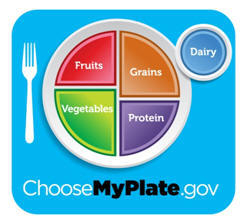
MyPlate: The Food Pyramid Reimagined
The USDA recently launched the new and improved food pyramid in the
shape of a circle, or more specifically, a plate. Its design is
meant to show you how much of your actual plate should contain each
food group. In doing this, the USDA hopes to “help Americans make
healthy food choices and to be active every day”.
The new website, choosemyplate.gov is loaded with lots of tips and
resources to help lead a nutritionally balanced life, as well as
tools to help with weight management and a “Super Tracker” to keep
track of your daily food intake and activity.
For more information, check out
www.choosemyplate.gov
Resources for additional recipes that
are good, good for you and economical:
http://www.eatingwell.com/recipes_menus/collections/cheap_eats
http://blog.foodnetwork.com/healthyeats/
Fiber & Whole Grains – Most Adults Don’t Get Enough
The USDA recommends 14 grams of fiber for every 1,000 calories
consumed per day (which could equate to anywhere between 18-35 grams
for most healthy adults based on caloric needs), but because of the
lack of whole grains and/or not eating the recommended amount of
fruits and vegetables, a lot of us are missing the mark.
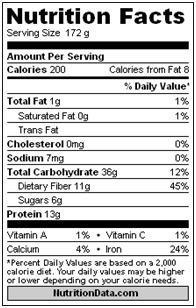
Incorporating whole grains into your
diet is an easy way to boost your daily fiber intake. For the best
bet on whole grain products, make sure to look at the nutritional
value label and ingredient list and not just the product name. The
names can be very deceiving.
Check the fiber content – if the product
does not have at least 2 grams of fiber per serving, then it is not
enough. And if the primary ingredient listed is anything other than
whole wheat or whole grain, then you’d be best to skip it. It will
not be providing the nutritional value you need.
Adults require between 5-11 servings of
grains every day and these can come from bread, cereal, pasta, rice
and more. At least 3 of these grain servings should come from whole
grains. Look for whole grain cereal, rice, pasta, or whole wheat
bread or wraps.
So you really can, and should, continue
to enjoy bread, pasta, and
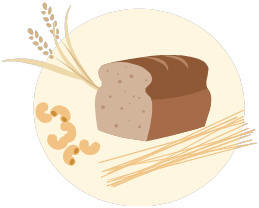 other
“carbs” that have gotten such a bad rap lately – just do so in
moderation and try to consciously swap out some of your old
standards to whole grain alternatives. The addition of these whole
grains will help you reach that daily recommended amount of fiber. other
“carbs” that have gotten such a bad rap lately – just do so in
moderation and try to consciously swap out some of your old
standards to whole grain alternatives. The addition of these whole
grains will help you reach that daily recommended amount of fiber.
If you are still finding it difficult
to meet your daily fiber needs, try using a supplement such as
Benefiber or Metamucil –tasteless powders that will dissolve
instantly in any drink or even in soft foods like yogurt.
For More Information on daily
dietary requirements and nutrition, check out
usda.gov or
nutritiondata.com
The Slow Cooker:
A Tight Budget’s Best Friend
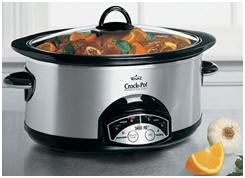
Slow cooking is a delightful method of
cooking for its ability to make cheaper cuts of meat into tender,
delicious meals. Using a slow cooker is extremely budget and time
friendly. Save money at the grocery store and precious time at home
with your family.
There are hundreds
of slow cooker cookbooks out there, and many great free recipe
resources on the web, but many of your favorite oven recipes can
also be converted to a slow cooker. A basic conversion chart is
found below, but please consult your user manual before attempting
to convert your recipes, as every slow cooker is different.
|
Conventional Recipe: |
Low (200°): |
High (300°): |
|
15 -
30 min |
4 - 6
hrs |
1 1/2
- 2 hrs |
|
35 -
45 min |
6 -
10 hrs |
3 - 4
hrs |
|
50
min - 3 hrs |
8 -
18 hrs |
4 - 6
hrs |
For more helpful conversion tips:
http://southernfood.about.com/library/weekly/aa980215.htm
http://homecooking.about.com/library/weekly/blcrocktips.htm
http://busycooks.about.com/library/weekly/aa022103a.htm
Slow
Cooker Recipes:
Betty Crocker Slow Cooker
Creamy Herbed Chicken Stew
(Photo Courtesy of Betty Crocker.com)
Takes 15
Minutes to prepare, 7 ½ hours to cook, Feeds 4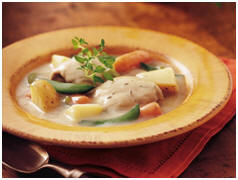
Ingredients:
2 cups baby-cut carrots
2 Yukon Gold potatoes, cut into 1
1/2-inch pieces
½ cup chopped onion
½ cup sliced celery
1 teaspoon dried thyme leaves
¼ teaspoon salt
¼ teaspoon pepper
1 pound boneless skinless chicken
thighs
1 ½ cups Progresso® chicken broth
(from 32-ounce carton)
1 cup snap pea pods
½ cup whipping (heavy) cream
¼ cup Gold Medal® all-purpose
flour
Steps:
1.
Place carrots, potatoes, onion and celery in 3
1/2- to 5-quart slow cooker.
2.
Sprinkle half of the thyme, the salt and pepper
over vegetables in slow cooker. Place chicken on vegetables.
Pour broth over top.
3.
Cover and cook on low heat setting 7 to 8 hours
or until juice of chicken is clear when center of thickest part
is cut (180°F) and vegetables are tender. Add pea pods; cook 5
to 10 minutes or until crisp-tender.
4.
Remove chicken and vegetables from slow cooker to
serving bowl, using slotted spoon. Cover with aluminum foil;
keep warm. Increase cooker to high heat setting. Mix whipping
cream, flour and remaining thyme; stir into liquid in cooker.
Cover and cook about 10 minutes or until thickened. Pour over
chicken and vegetables.
Timesaver Tip:
You can chop the
onions and celery the night before, as long as you cover and
refrigerate them (so they won’t dry out). You do need to wait
until ready to make the dish to cut the potatoes, so they do not
turn brown.
Budget Saver:
Baby cut carrots
can be more expensive than the larger variety. You can buy large
carrots and cut them into chunks instead of using the baby cut.
You can also substitute regular green beans in place of the snap
peas. Let your creativity reign and save a buck while you are at
it!
*Find
this and other great recipes at
Bettycrocker.com/recipes
Other
Excellent Slow Cooker Recipe Sites:
Better Homes & Gardens
|